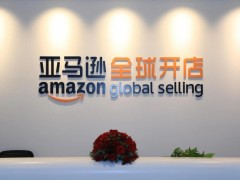How is Amazon's Middle East market?
首先,这是个蓝海市场。
从全球市场来看,中东这块市场的电子商务的发展正开始进入快车道。国际货币基金组织(IMF)于2023年发布的《世界经济展望》报告显示,中东地区经济保持增长态势,预计2023年增速为3.2%,2024年将升至3.5%。
对于跨境商家、平台来说,中东市场以阿联酋、沙特、埃及、以色列等国家为主。关于这些国家的经济发展水平,亚马逊方面的数据显示,预计到2030年,阿联酋、沙特和埃及这三个国家的零售规模将增长到3500亿美元。此外,阿联酋和沙特的互联网和手机普及率高,使得两地超过70%的零售交易是在线完成的。
更重要的是,阿联酋本土制造商少。亚马逊全球副总裁、中东及北非地区负责人Ronaldo Mouchawar表示,该国超过50%的零售采购来自国外卖家,这对中国卖家而言是一个巨大的机会。
作为蓝海市场,意味着原本在电子商务成熟市场的业务增长曲线有极大概率能在这个市场复刻。
Professional answer
First of all, this is a blue ocean market.
From the perspective of the global market, the development of e-commerce in the Middle East market is beginning to enter the fast lane. The World Economic Outlook report released by the International Monetary Fund (IMF) in 2023 shows that the Middle East economy maintains a growth trend, with an estimated growth rate of 3.2% in 2023 and 3.5% in 2024.
For cross-border merchants and platforms, the Middle East market is dominated by countries such as the UAE, Saudi Arabia, Egypt, and Israel. Regarding the economic development level of these countries, Amazon's data shows that by 2030, the retail scale of the three countries of the UAE, Saudi Arabia and Egypt is expected to grow to US$350 billion. In addition, the high Internet and mobile phone penetration rates in the UAE and Saudi Arabia have enabled more than 70% of retail transactions in the two places to be completed online.
More importantly, there are few local manufacturers in the UAE. Ronaldo Mouchawar, Amazon's global vice president and head of the Middle East and North Africa, said that more than 50% of the country's retail purchases come from foreign sellers, which is a huge opportunity for Chinese sellers.
As a blue ocean market, it means that the business growth curve originally in the mature e-commerce market is very likely to be replicated in this market.
Similar Q&A
recommend How to view sales of several months on Amazon?
E-c News Continuously pushing e-commerce knowledge to you








Latest Q&A More
-
Do I need a trademark to open a franchise store on Pinduoduo to sell books?
#Pinduoduo#
-
How to withdraw from a Pinduoduo store
#Pinduoduo#
-
How to withdraw from Pinduoduo merchants
#Pinduoduo#
-
How to pay fees when closing a Pinduoduo store
#Pinduoduo#
-
How to withdraw from Pinduoduo
#Pinduoduo#
-
Which store on Pinduoduo is authentic?
#Pinduoduo#
-
Which stores on Pinduoduo can buy genuine products?
#Pinduoduo#
-
How to check the store under Pinduoduo
#Pinduoduo#
-
How to receive Pinduoduo online game products
#Pinduoduo#
-
How to sell the electronic version on Pinduoduo
#Pinduoduo#
E-c News 2025-07-31 04:22:43

- African netizens use China Africa cross-border e-commerce platform for online shopping
- how is the new seller of cross-border e-commerce doing?
- how can cross-border e-commerce Amazon sell on Amazon platform without goods?
- Amazon store opening process and cost analysis!
- Amazon plans to expand its pharmacy business on a large scale and will add same day delivery service
